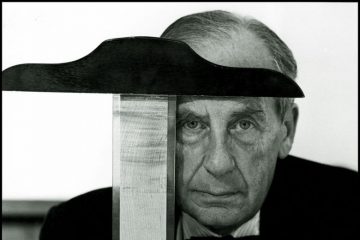Lucy Wasensteiner at the TLS:
 The subsequent outpouring of creativity at the Bauhaus has since become the stuff of legend. Yet despite its popularity among teachers and students, the school and its methods were consistently controversial. As the clouds of nationalism gathered over Germany, many in Weimar were troubled by the blatant internationalism of the Bauhaus. Others attacked the emphasis on freedom and experimentation as inappropriately indulgent for a state-funded school. The economic uncertainties of the early 1920s only increased the pressure on Gropius. In 1925, the authorities in Weimar closed the school, forcing its relocation to Dessau, about 100 miles to the northeast.
The subsequent outpouring of creativity at the Bauhaus has since become the stuff of legend. Yet despite its popularity among teachers and students, the school and its methods were consistently controversial. As the clouds of nationalism gathered over Germany, many in Weimar were troubled by the blatant internationalism of the Bauhaus. Others attacked the emphasis on freedom and experimentation as inappropriately indulgent for a state-funded school. The economic uncertainties of the early 1920s only increased the pressure on Gropius. In 1925, the authorities in Weimar closed the school, forcing its relocation to Dessau, about 100 miles to the northeast.
This move provided Gropius the architect with perhaps his best-known commission: new premises for the Bauhaus and living quarters for its staff and students. Dessau also marked a new chapter in the ideology of the school. In 1926 – the year of the reopening – Gropius published what amounted to a second manifesto, his “Principles of Bauhaus Production”.
more here.
